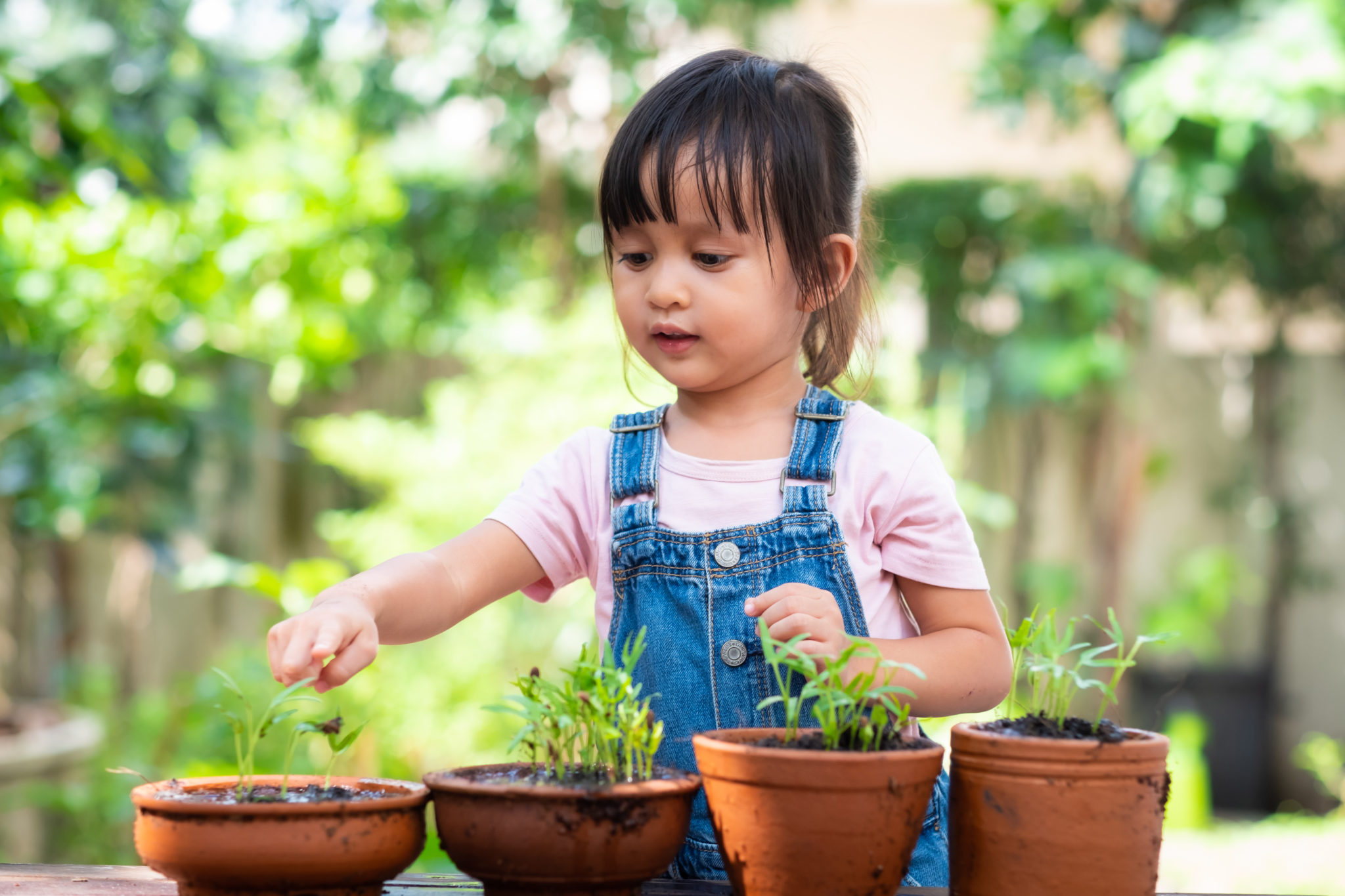Discovery Point Blog

Gardening with Children
Are you looking for a project to keep your children busy this summer that is both educational and exciting? Children love being hands-on and don’t mind getting a little dirty, making gardening a fun activity that enables them to experience the power of nature.
Gardening also teaches children about the importance of patience and care. This hands-on activity will also give them a better understanding of where some of their favorite foods and flowers come from.
Of course, you might need to take a slightly different approach to gardening with your child than you would if you were gardening on your own. Depending on your child’s age, you may want them to take charge of certain tasks while leaving others for you to handle. Read on for some of our suggestions to make this activity a fun and productive way to spend the summer months.
Indoor Gardening Tips
No outdoor space? No problem! You can get your child involved in planting and sprouting even without the luxury of a yard or flowerbed. There are a number of household items that can be creatively used as indoor gardens, as well as plenty of plants that grow well indoors.
No Soil Needed
For a quick and easy introduction to gardening, start with what you have. For many growing projects, you don’t even need seeds or soil! Did you now you can actually watch plants grow from water and what would have otherwise been kitchen scraps?
Celery is really easy to grow indoors. Just take the bottom of a celery bunch and place it in a glass cup or dish that has been filled with a small amount of water. Within a couple of days, you’ll notice the growth of stalks and leaves that can then be enjoyed as part of your favorite dish. Check out these easy instructions for regrowing celery.
Sweet potatoes are also easy to grow in water. Not only are their leaves and stems edible, but they’re often used for decoration. To sprout a sweet potato, keep half of it submerged in water in a jar or glass (toothpicks can be used to prevent the top half from falling into the water). You can even plant the sprouts in a container to produce more sweet potatoes if you can find a spot where they’ll get plenty of sunlight. Get more tips for growing sweet potatoes here.
Easy Container Projects
With a bit of soil, you can grow many other plant types – both flowers and vegetables – indoors. Mason jar terrariums are particularly fashionable at the moment and are a great way for your child to display their tiny gardens. Cans, eggshells, juice boxes, and certain toys (such as toy trucks) can also be made into fun makeshift containers and raised beds.
Find ideas for starting and caring for container gardens here.
Outdoor Gardening Tips
If you have plenty of outdoor space to work with, getting your child involved in gardening outdoors is an excellent physical activity that also stimulates creativity. If possible, give your child their own garden beds so they can really take ownership of the process.
This can be a very small area or even a repurposed sandbox. Just make sure it has plenty of quality soil and light. After all, you want to set your child up to be able to enjoy the fruits of their labor.
Choose Your Tools Wisely
While plastic child-sized gardening tools are popular toys, they’re mainly meant for imaginary gardens. The last thing you want is your child’s tool to break while they’re digging in the soil, as this will only lead to frustration.
Spend some time locating solid tools that will fit your child’s hands and make them feel like they’re really making a difference, not simply playing along. We also recommend getting your child their own gardening gloves, an apron, and an outdoor hat to protect them from the sun.
Avoid Shortcuts
Starting from seeds, rather than purchasing seedlings, will help your child understand the full process of growing a plant. When the tiniest sprouts start shooting up from the soil, it will truly be like magic! You may want to begin this process indoors (see above) and then transplant the seedlings to the outdoor garden once they’ve matured.
Appreciate the Harvest
Give your child the chance to appreciate and enjoy the bounty they’ve produced, no matter how small it is. If they’ve grown flowers, suggest that they place a few in a vase on the dinner table so everyone can enjoy them. Or, they can press and dry some of the petals as a souvenir of an exciting summer. If edible products are the result of their gardening efforts, ensure they are able to participate in preparing and serving their crops, even if there’s only a bite or two for each family member.
Looking for more ideas? There are plenty of online resources directed at promoting children’s education through gardening. Sisters Grimm is a great place to start. Kidsgardening.org is a great gardening resource, as well. With a little bit of creativity and patience, you can help open up a whole new world to your child that leads to an increased appreciation of the beauty that nature has to offer.


